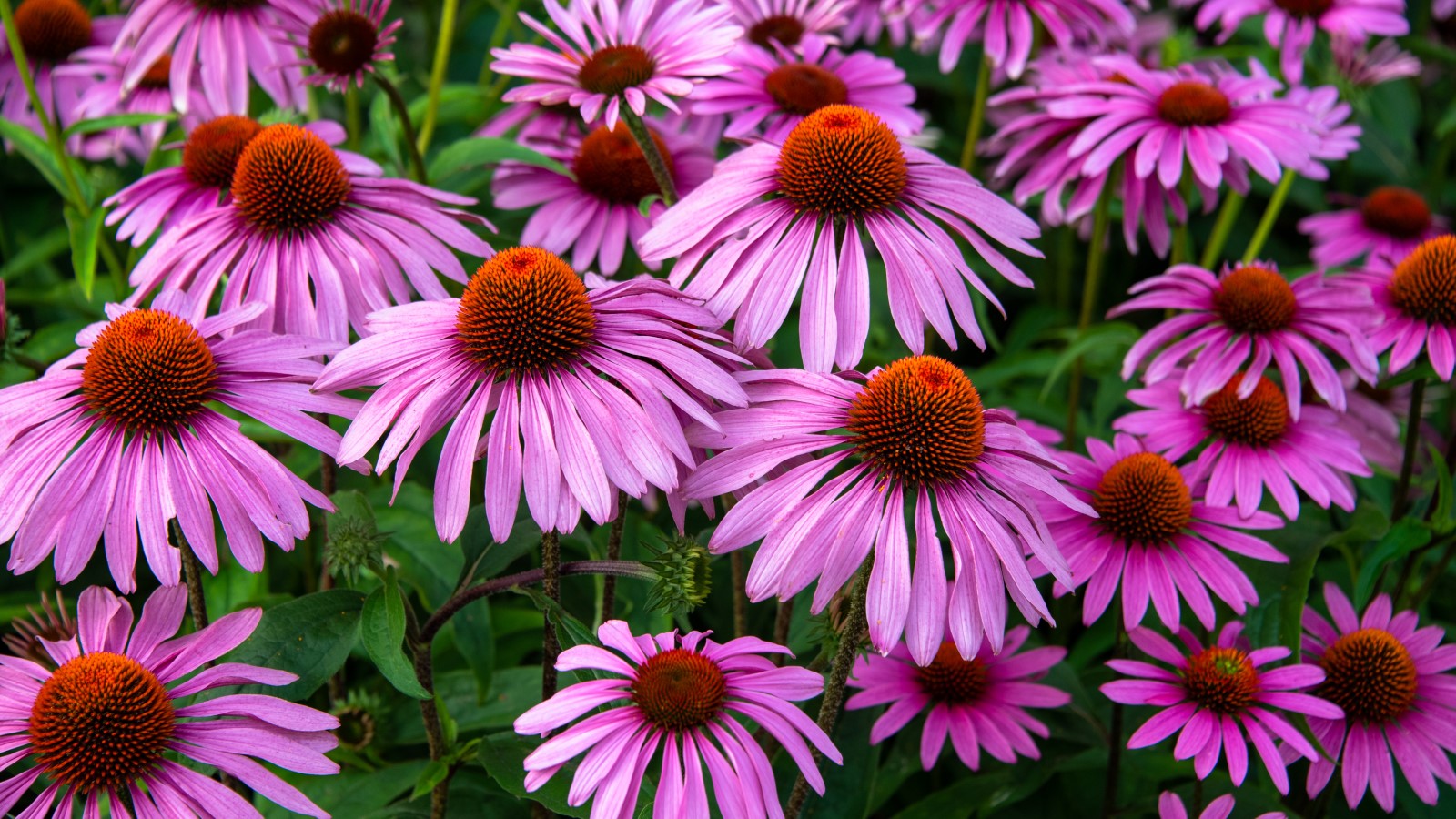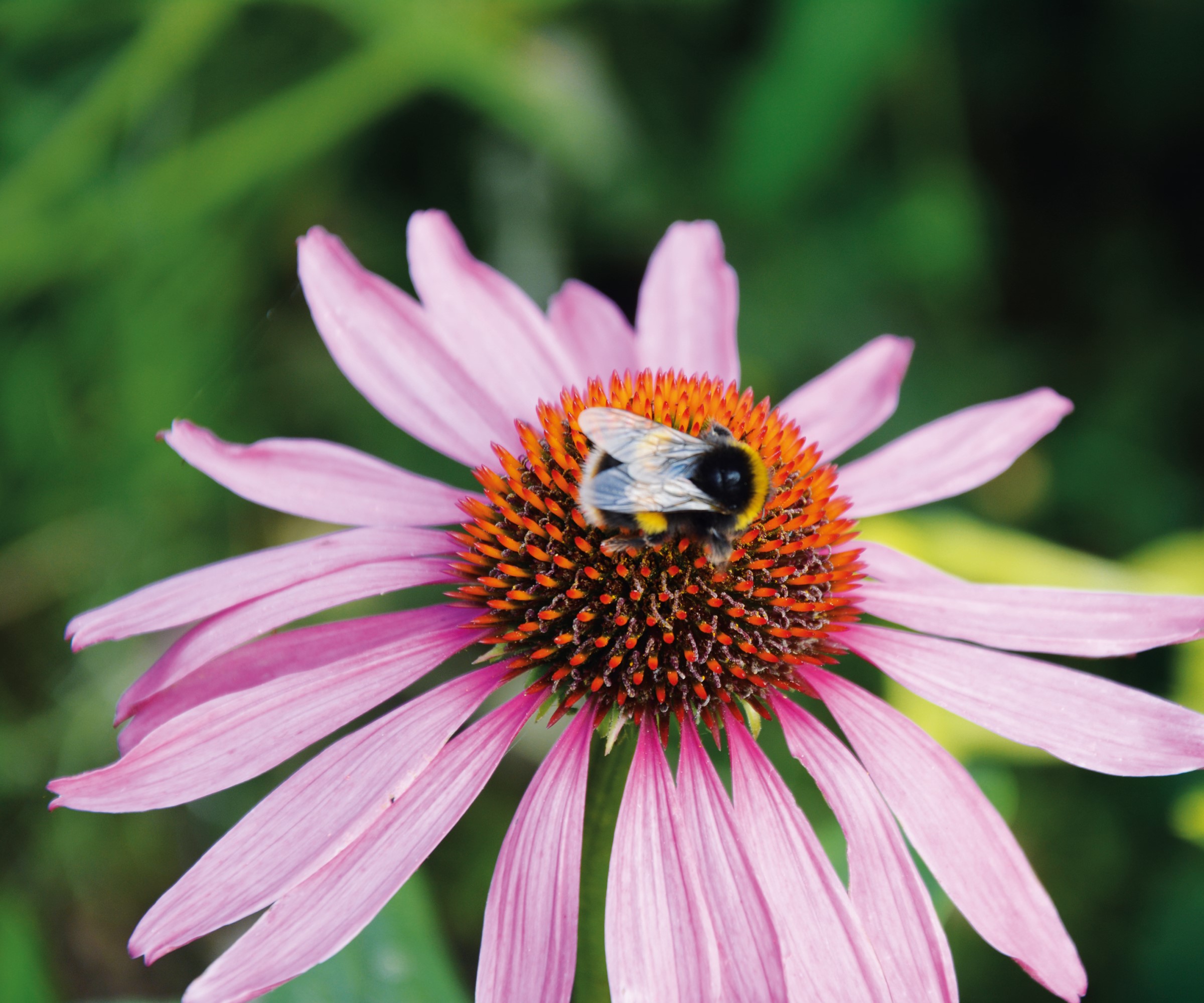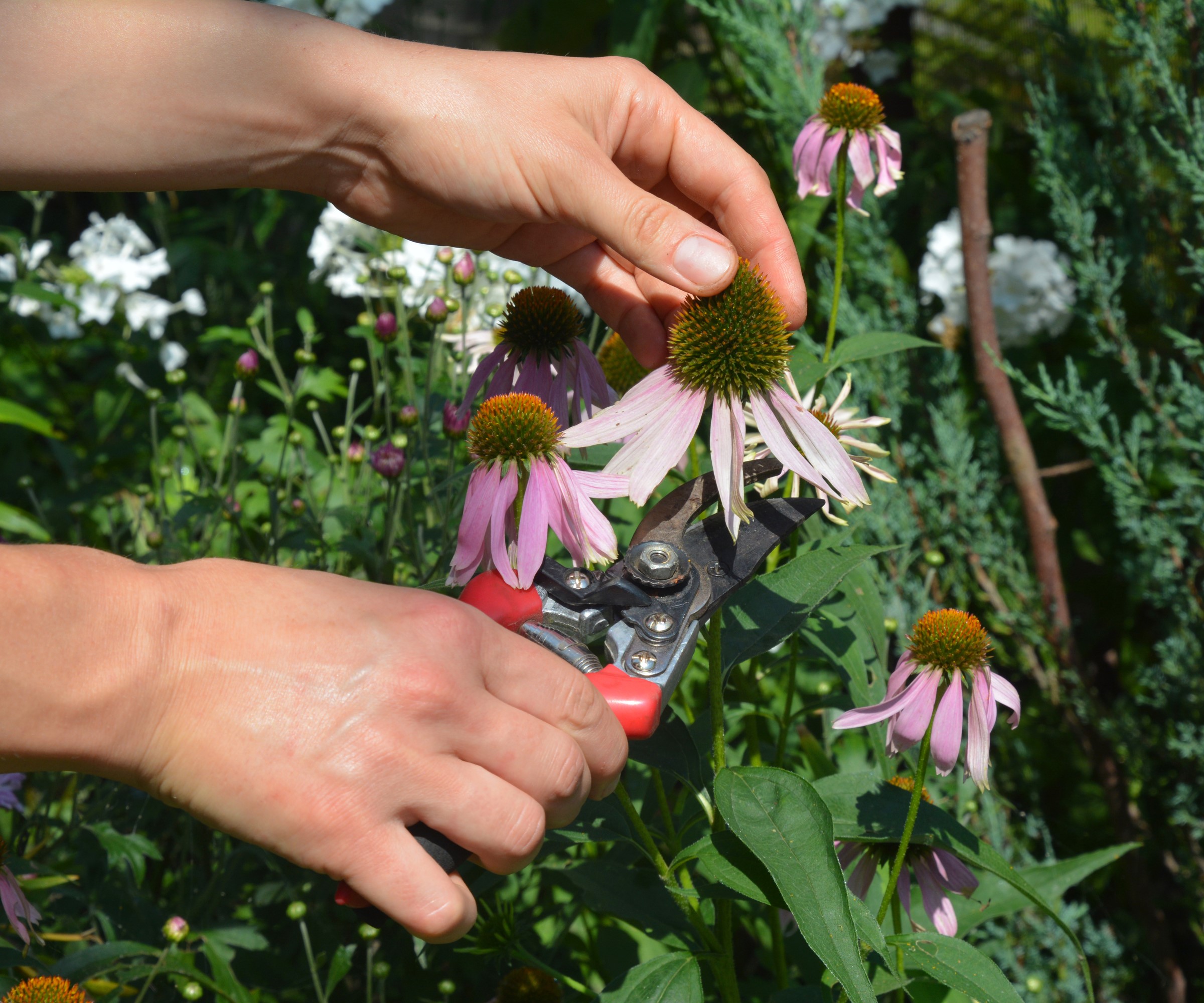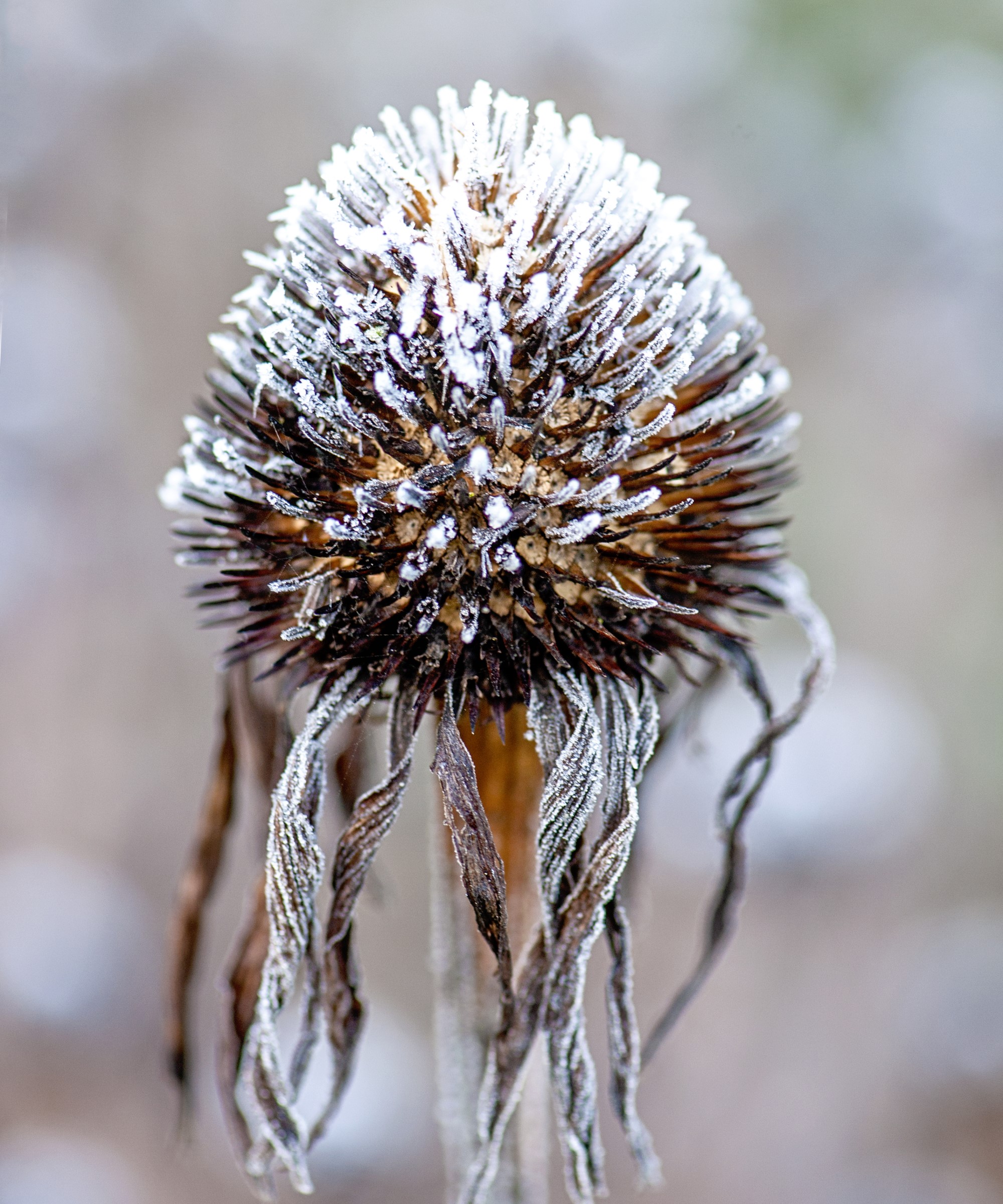When to cut back coneflowers for thriving blooms – is it better to do it in late fall or early spring?
Discover the pros and cons of either time, along with how to cut back coneflowers correctly


Coneflowers come in a wealth of fantastic shades and forms, so many that there is sure to be a great coneflower variety for any backyard. These easy-growing perennial plants, also known as Echinacea, bloom vividly over a long period and are renowned as favorites of both bees and butterflies.
They are low-maintenance plants that do need to be pruned once their growing season is over for the year. Deadheading throughout the summer will help encourage more blooms, but come the end of the season they do need to be cut down to the ground.
There are two schools of thought for when is the best time to cut back coneflowers. You can either cut back coneflowers in the fall after the flowers have faded for the year and the plant enters dormancy, or coneflowers can be cut back in the early spring before the new growth begins. We take a look at both methods to help you decide when to cut back coneflowers in your garden.

Coneflowers are great for attracting bees
Cutting back coneflowers in fall
A lot of gardeners will choose to cut back coneflowers in the late fall or early winter after they go dormant. By cutting back coneflowers at this time it helps to ensure that your garden maintains a neat and tidy appearance. Trimming the plant back to just above ground level can be part of fall garden maintenance to tidy up flower beds and prepare the yard for the colder months.
Coneflowers can naturally self-seed and spread around the garden, potentially getting out of hand if you are working with just a small garden and don’t want too much of one plant. Regularly deadheading coneflowers and removing seed heads as part of clearing coneflowers in the fall can prevent the plant from spreading throughout the garden. The timing of taking off the seed heads before they spread will also be key if you want to harvest coneflower seeds.
Whether you cut back coneflowers for winter depends on your priorities and also the local climate in your US hardiness zone. Zahid Adnan, a gardener and founder of The Plant Bible, claims: 'In colder climates, cutting back coneflowers in the fall is often recommended. This prevents disease issues and avoids leaving dead foliage susceptible to winter damage.'
One downside to cutting back in the fall in warmer climates is that it can encourage new growth to form, which can then be easily damaged by the winter frosts.

Zahid Adnan is the founder and editor of The Plant Bible. As well as managing a plot of 10-hectare agricultural land, he is also involved in a project to develop sustainable urban farming practices by utilizing farming technologies to increase food production and reduce environmental impacts.

Coneflowers should be deadheaded throughout the season
Cutting back coneflowers in spring
The other option for when to cut coneflowers back is to do it in spring. This tactic can help to boost the aesthetic appeal of the winter garden, with not only the plants looking architectural but the dried seed heads glistening when touched by frost or covered with a dusting of snow.
Miguel Palma, a professional gardener and owner of Jardin Tienda, claims that leaving the plants in place for winter ‘offers several benefits for your garden ecosystem’ and further cement the coneflower as one of the best plants for birds.
He says: ‘The dried seed heads left on the plants become a natural feeding station for birds, contributing to their sustenance during the colder months when food may be scarce. This practice aligns with a nature-friendly approach, allowing your garden to play a role in supporting local wildlife.’
Furthermore, leaving the stems can protect the crown of the plant from extreme winter weather and, while some gardeners may not want coneflowers seeding all over the yard, there are some who may relish the prospect of free plants sprouting up in their garden.
When you do cut back may depend on the type of coneflowers you are growing. There has been leaps forward in hybrid modern varieties in recent years, however, some hybrid types are sterile and do not produce seeds. That means that they do not spread, but also do not benefit birds that eat the seeds over winter. They can still offer an aesthetic benefit over winter, without being a food source.

Miguel Palma is a professional gardener with over 20 years of experience in the horticultural business. He is the owner of JardinTienda, a site dedicated to reviewing gardening products and providing independent buyers guides.

Coneflower seed heads are a food source for birds during winter
How far to cut back coneflowers
Cut stems back to around two inches above the ground. Leaving the short stems in place is done for two reasons, to protect the crown of the plant and to allow new shoots to emerge come next spring. The process to cut back coneflowers is the same whether you are doing the pruning in the fall or early spring. Any material from cutting back coneflowers can be added to the home pile to make compost, providing it is free of any sign of diseases.
It is important to use clean pruning shears when cutting the coneflowers down as using sanitized clean garden tools can prevent the spreading of disease around the garden. If not pruning shears, then hedge shears or garden scissors can be used to prune coneflowers. This 4-pack of garden-cutting tools, including pruning shears and garden scissors, available at Walmart can ensure you have all the tools for deadheading and cutting back a variety of plants, including coneflowers.
Coneflowers are one of the best plants for pollinators and deserve a place as part of many backyard ideas. Their flowers attract bees and butterflies in large numbers during the summer and fall blooming period – so native coneflowers should definitely be a must if you want to transform your space into a wildlife garden. You can see a wide range of coneflower varieties available at Nature Hills.
Sign up to the Homes & Gardens newsletter
Design expertise in your inbox – from inspiring decorating ideas and beautiful celebrity homes to practical gardening advice and shopping round-ups.

Drew’s passion for gardening started with growing vegetables and salad in raised beds in a small urban terrace garden. He has worked as a professional gardener in historic gardens and specialises in growing vegetables, fruit, herbs, and cut flowers as a kitchen gardener. That passion for growing extends to being an allotmenteer, garden blogger, and producing how-to gardening guides for websites. Drew was shortlisted for the New Talent of the Year award at the 2023 Garden Media Guild Awards.
-
 I'm 5ft2 and this telescopic scrubber safely and easily banished mold and grime in even the hardest-to-reach areas of my bathroom in less than 15 minutes
I'm 5ft2 and this telescopic scrubber safely and easily banished mold and grime in even the hardest-to-reach areas of my bathroom in less than 15 minutesMy bathroom has never looked better thanks to this handy $16 two-in-one tool from Joseph Joseph
By Ottilie Blackhall Published
-
 Everyone is obsessed with vintage tiles right now – bring the nostalgic charm of this classic design feature into your home with our 5 design ideas
Everyone is obsessed with vintage tiles right now – bring the nostalgic charm of this classic design feature into your home with our 5 design ideasHonor the past with our favorite ways to decorate with vintage tiles, as suggested by interior design experts
By Eleanor Richardson Published